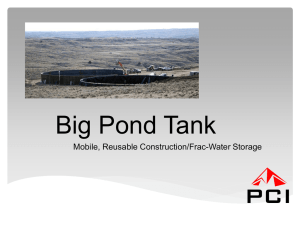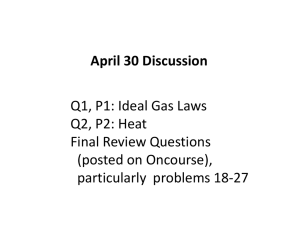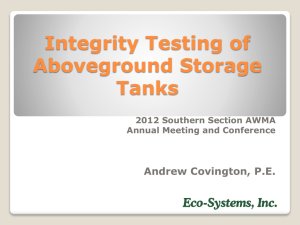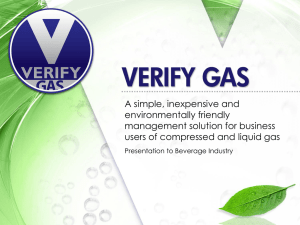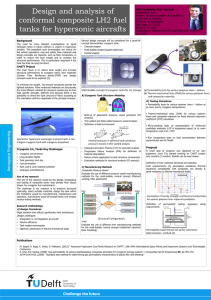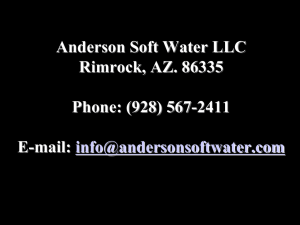Trends with Shop-Fabricated Storage Tanks
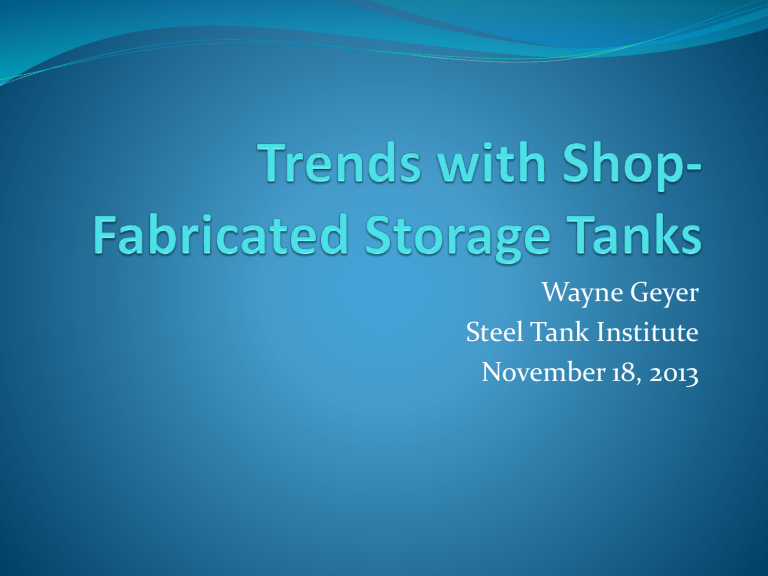
Wayne Geyer
Steel Tank Institute
November 18, 2013
Who and What is STI/SPFA?
Association of 180 fabricating and affiliate companies of steel construction products – shop-fab tanks, field erect tanks, pipe, pressure vessels and other special fabricated products
STI members account for nearly all of the total shop fabricated underground steel storage tank production capacity in North America
2012 Annual Product Awards:
Steel Fabricated Products www.steeltank.com
Steel Fact Sheets
What does the Steel Tank Institute do?
UST and AST tank technologies
Industry standards and recommended practices
License manufacturers to build tanks to STI specifications
Quality control
Information resource
Certification
4 – 50,000 Gallon Permatanks
Installed at Northwestern
Univeristy
STI Tank Registration
Every tank built with an STI labeled is inspected by tank fabricator to meet STI specification
Tank is “registered” with STI
STI maintains database with over 400,000 entries
Tank Performance Evaluation
All STI labeled UST’s subject to 3 rd party warranty
STICO Mutual has strong claims management program
STI gets feedback on quality and performance
Education, Research, & Advocacy
STI Certification Programs
• 927 Certified SP001 Aboveground
Storage Tank Inspectors
• 484 Certified Cathodic Protection
Testers
• Over 130,000 sti-P3 tanks tested for cathodic protection through
WatchDog program
• NEW: On Line Learning Program
• T*I*M Tank Integrity Management
STI Shop-Fabricated Tank Programs
• > 100 tank shops licensed and inspected
• 14 tank fabrication standards
• 19 recommended practices for testing, installation and inspection
–
NEW: R111 Storage Tank
Maintenance
–
Under Development: SP131 - UST
Inspection, Repair, & Modification
35 000
T a n
30 000 k
25 000
1988
sti-P3 Tank
Installations
t s i
U n
20 000
15 000
B l t i u
10 000
5 000
0
1971
1998
2008
1 2 3 4 5 6 7 8 9 10 11 12 13 14 15 16 17 18 19 20 21 22 23 24 25 26 27 28 29 30 31 32 33 34 35 36 37 38 39 40 41
Years in Number after 1970
Coatings Provide Corrosion
Protection
Underground Storage Tanks
Primarily used at service stations today
Tanks are getting larger
STI Database
Average capacity in 2013 for jacketed tank exceeds 15,000 gallons
25 years ago, the typical
UST at a service station was 8000 – 10,000 gallons
Compartment Tanks
Compartment tanks have become very common for both UST’s and AST’s
Multiple fuel types can be stored within one tank unit
Provides user/owner versatility as more fuels develop
Underground Storage Tanks
UL 58 is the principle standard for steel tank construction – single wall and double wall steel
UL 1746 is the principle standard for corrosion control and for jacketed
(non-metallic outer wall) tank construction
Underground Storage Tanks
Regulations require all tanks incorporate secondary containment
Today, jacketed tanks are favored by many buyers as outer containment provides a corrosion barrier and secondary containment
Other corrosion systems use two walls of steel
Fabricating Steel Secondary
Containment
After the primary tank is built and tested, the outer wall is fabricated atop the primary tank.
The second wall is intimately wrapped atop the primary tank wall.
Testing the Interstice
Most fabricators will test the interstice by bleeding air from a 3-5 psi pressurized inner tank into the secondary tank.
The volume of the interstice is very small and can get pressurized rapidly.
Access to the interstice can be fabricated in different ways
Production Test to Verify Both
Walls are Tight
Upon completion of production testing of the interstice with positive air pressure, and soap testing the welds of the secondary containment, all air is released.
Then a vacuum is pulled within the interstice and monitored by the fabricator for tightness over time.
Preparing the Tank for Delivery
After ancillary equipment installed, coatings applied, etc. the tank is made ready for shipment.
Fabricators apply a vacuum into the interstice of secondary containment tanks.
Interstitial Vacuum
After the vacuum is applied, the tank is held in storage until it is made ready for delivery
The vacuum remains on the tank during storage, delivery, and during much of the installation.
An easy view of the vacuum gauge to verify retention of the vacuum assures that both walls remain tight.
Tank Compatibility - Biofuels
E10, E15, E85, B2, B20, B100
Steel Tank Manufacturer
Certification Statements
STI Web Site
Performance
Tanks are Cleaner – Sludge
Biodiesel Shelf Life
Water Concerns
Phase Separation - Ethanol
Recent Events
Biofuels
• Sumps
• EPA ORD Research
• NIST Research
• Publications
• “Compatibility of UST
Systems with Biofuels,”
• Published by ASTSWMO
• Case Studies
• Research and Work
Groups
• Underground tanks storing E85
23
Ultra Low Sulfur Diesel Issues
• Corrosion of metal components within
FRP tanks storing ULSD
• Clean Diesel Fuel Alliance supported research from Battelle Labs completed in 2012
• Further studies under consideration
• STI Research
• Tanknology hired to visually examine the insides of steel and FRP ULSD tanks
• Fuel samples extracted and tested
• Example – Las Vegas service station tanks under same owner
• FRP tank vapor control fitting – top right photo
• Steel tank vapor control fitting – bottom right photo
24
Inspection and Maintenance of the Tank System
Inspection and
Maintenance
STI R111
Storage Tank Maintenance
STI SP001 AST Inspection
Aboveground Storage Tanks
• Cylindrical
• Rectangular
• Vertical
• Horizontal
• Double Wall
• Diked
• Fire-protected
• Gen-Base
• FieldErected
Aboveground Storage Tanks
Most popular choice for shop-fabricated tanks for:
Fleet motor vehicle fueling applications
Fuel for emergency power generators
Bulk oil and chemical storage
Secondary containment
Aboveground Storage Tanks
UL 142 is the principle standard for steel tank construction – single wall and double wall steel.
UL 2085 is the principle standard for two hour fire protected tank construction.
Aboveground Storage Tanks
Secondary contained shop-fabricated steel tanks are preferred:
Serves as spill control to meet fire codes
Meets SPCC rules with proper use of overfill prevention equipment
Double wall construction preferred over diking
AST’s with 2-Hr Fire Test Ratings
31
Protected AST’s
Protected aboveground tanks preferred when:
Installed in close proximity to buildings & property lines
Dispenser mounted on tank
Minimize fire safety hazards
Meet codes for motor vehicle fuel dispensing
SPCC – AST Inspections
EPA references STI
SP001 standard for smaller tank inspection and integrity verification
Category 1 preferred
Double wall tanks can be easily tested with vacuum to prove containment integrity
Category 3 – Higher Risk to Environment
Facilities with a mix of tanks require one type of inspector
Release Prevention
Barrier (RPB)
Liquid containment barrier
Under the AST
Diverts leaks toward the perimeter of the
AST where they can be easily detected
Risk Matrix Concept – SP001
More Risk
Tank Size
Shop built tanks
0 - 1100
1101 -
5,000
5,001 -
30,000
30,001 -
50,000
Field erected
Portable containers
Category 1
P
P
P, E(20)
P, E(20)
P, E(5), I(10)
P
Category 2
P
P, E&L(10)
[P, E(10)& I(20)] or
[P, E(5) & L(10)]
P, E&L(5), I(15)
P, E(5), I(10)
P
Category 3
P, E&L(10)
[P, E&L(5), I(10)] or
[P, E(5) & L(2)]
[P, E&L(5), I(10)] or
[P, E(5) & L(1)]
P, E&L(5), I(10)
P, E(5), I(10)
P **
Category 1 – Secondary
Containment and CRDM
Double-wall Tank with Overfill Prevention
Tank in a
Concrete Dike
Wayne Geyer
WGeyer @ steeltank.com
847-438-8265 www.steeltank.com

